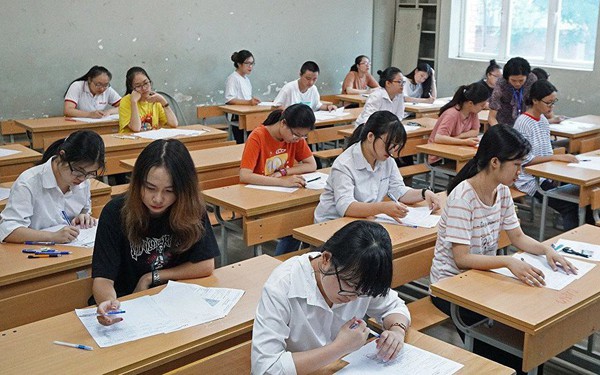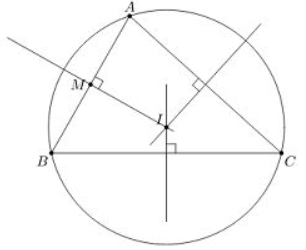Question 1: Mrs. Stevens, along with her cousins from New Mexico, are planning to attend the festivies.
A. along with B. her cousins C. are D. to attend
Question 2: A number of the American Indian languages spoken at the time of the European arrival in the New World in the late fifteen century have become extinct.
A. A number of B. spoken C. at the time D. fifteen
Question 3: A smile can be observed, described, and reliably identify; it can also be elicited and manipulated under experimental conditions.
A. A smile B. identify C. can also D. experimental
Read the following passage and mark the letter A,B ,C or D on your answer sheet to indicate the correct word or phrase that best fits each of the numbered blanks blanks.Teaching English as a foreign language can be a great way to travel the world and earn money at the same time. However, some graduates actually like the idea of (4) ............... a career in teaching English long-term, and there are numerous courses at various (5) ............... of teaching, from the fast- track TEFL to a diploma or masters.
To find the right course a good place to start is TEFL.com – an Internet site with lots of relevant information and helpful advice, including a comprehensive list of institutions in the UK offering TEFL courses. The site also offers a job search facility to assist qualified students (6) ............... finding work.
When deciding which course to take, the best bet is to look at what your needs are. If you want a career in teaching English then definitely find one designed for that (7)..........., like an MA or diploma; but if you want to travel around the world, then do a shorter course which will supply you with teaching skills.
Some countries, like Japan, will employ people without a teaching qualification as (8)............. as the teacher is a native speaker of English. However, most countries do now expect a qualification.
|
Question 4: Question 5: |
A. Pursuing A. levels |
B. chasing B. categories |
C. hunting C. groups |
D. tracking D. classes |
|
Question 6: |
A. to |
B. for |
C. at |
D. in |
|
Question 7: |
A. function |
B. refresh |
C. aim |
D. purpose |
Question 8: A. soon B. far C. well D. long
Mark the letter A, B, C, or D on your answer sheet to indicate the word that differs from the other three in the position of the primary stress in each of the following questions.Question 9: A. demolish B. terrorist C. dramatic D. substantial
Question 10: A. electronic B. equivalent C. proficiency D. petroleum
Mark the letter A, B, C or D on your answer sheet to indicate the word(s) CLOSEST in meaning to the underlined word(s) in each of the following questions.Question 11: The event, watched by millions of people all over the country, takes place annually.
A. regularly B. once every year C. sometimes D. smoothly
Question 12: The government is not prepared to tolerate this situation any longer.
A. look down on B. give onto C. put up with D. take away
Mark the letter A, B, C or D on your answer sheet to indicate the word(s) OPPOSITE in meaning to the underlined word(s) in each of the following questions.Question 13: An employer must be very careful in dealing with subordinates and documenting their files in order to avoid complaint.
A. bosses B. coordinators C. outsite help D. employees
Question 14: I have never ecperienced such discourtesy toward the guests as it occures at the graduation party.
A. rudeness B. politeness C. measurement D. encouragement
Mark the letter A, B, C, or D on your answer sheet to indicate the sentence that best combines each pair of sentences in the following questions.
Question 15: She was the first woman in the Philippines. She was elected as the president of the country.
A. She was the first woman who is elected as the president of the Philippines. B. She was the first woman to be elected as the president of the Philippines C. She was the first woman elected as the president of the Philippines
D. She was the first woman being elected as the president of the Philippines Question 16: When I heard the phone ring, I answered it immediately
A. On hear the phone rang, I answered it immediately
B. On hear the phone ring, I answered it immediately
C. On hearing the phone ring, I answered it immediately
D. On hearing rang, I answered the phone immediately
Mark the letter A, B, C or D to indicate the word(s) OPPOSITE in meaning to the underlined word in each of the following questions.
Question 17: Henry hoped that his sons would someday take over his retail business and maintain the high level of customer service and satisfaction that Henry valued so much.
A. eliminate B. continue C. uphold D. connect
Question 18: Tom Swayer became internationally famous for his novels.
A. well known B. celebrated C. unknown D. infamous.
Read the following passage and mark the letter A, B, C, or D on your answer sheet to indicate the correct answer to each of the questions from 36 to 42.
Scientists have discovered the bones of what may be the largest meat-eating dinosaur ever to walk the earth. The discovery was made by a team of researchers from Argentina and North America in Patagonia, a desert on the eastern slopes of the Andes in South America. Besides the interesting fact that the dinosaur was huge and horrifying, it is even more astounding that the bones of a number of the dinosaurs were found together. This discovery challenges the prior theory that the biggest meat-eaters lived as loners and instead indicates that they may have lived and hunted in packs. The Tyrannosaurus Rex lived in North America and was believed to hunt and live alone.
The newly discovered meat-eater appears to be related to the Giganotosaurus family, being as closely related to it as a fox would be to a dog. It is actually not of the same family at all as the Tyrannosaurus Rex, being as different from it as a cat is from a dog.
The fossilized remains indicate that the animals lived about 100 million years ago. With needle-shaped noses and razor sharp teeth, they were larger than the Tyrannosaurus Rex, although their legs were slightly shorter, and their jaws were designed to be better able to dissect their prey quickly and precisely.
Question 19: The author states that the newly discovered dinosaur remains are evidence that it was the author
A. carnivorous dinosaur B. dinosaur ever
C. South American dinosaur D. herbivorous dinosaur
Question 20: The word Besides in the first paragraph is closest in meaning to
A. in spite of B. mostly C. in addition to D. although
Question 21: The word horrifying in the first paragraph is closest in meaning to
A. frightening B. fast C. large D. interesting
Question 22: The author implies that the most interesting fact about the find is that this dinosaur
|
A. was found in the Andes |
B. had a powerful jaw and sharp teeth |
||
|
C. was larger than Tyrannosaurus Rex |
D. lived and hunted with others |
||
|
Question 23: The word it in the second paragraph refers to |
|
||
|
A. Relationship |
|
B. dog |
|
|
C. newly discovered meat-eater |
D. Giganotosaurus |
|
|
|
Question 24: The author states that the newly discovered meat-eating dinosaur is |
|||
|
A. closely related to Tyrannosaurus Rex. |
B. not closely related to Tyrannosaurus Rex |
||
|
C. not closely related to Giganotosaurus |
D. closely related to the large cat family |
||
|
Question 25: The word prey in the last sentence of the passage is closest in meaning to |
|||
|
A. enemy |
B. victim |
C. dinosaurs |
D. attacker |
Mark the letter A, B, C, or D to indicate the sentence that best combines each pair of sentences in the following questions.
Question 26: Her living conditions were not good. However, she studied very well.
- Living in difficult conditions forced her to study very well.
- She studied very well just because she lived in difficult conditions.
- Living in difficult conditions, she had no choice but to study well.
- Difficult as her living conditions were, she studied very well.
Question 27: He telephoned from a public call-box. He didn’t want the call to be traced to his own address
- He telephoned from a public call-box in order the call could be traced to his own address.
|
Question 28: I _______along the street when I suddenly heard footsteps behind me. |
|||
|
A. was walking |
B. am walking |
C. walk |
D. walked |
|
Question 29: It is imperative that he _______ the school regulations. |
|
||
|
A. would obey |
B. obey |
C. will obey |
D. obeys |
|
Question 30: _______, the more terrible the terrorism will become. |
|
||
|
A. The more powerful weapons are |
B. The more weapons are powerful |
||
|
C. The weapons more powerful are |
D. Weapons are the more powerful |
||
Question 31: Mr. Brown was obliged to pay damages to his neigbours in _______for the devastations his pet dogs made in their garden.
A. penalty B. reparation C. reward D. compensation
Question 32: Don’t _______to conclusions, we don’t yet know all the relevant facts.
A. hurry B. rush C. run D. jump
Question 33: Losing my job was a great shock, but I think I’m _______ it.
A. seeing to B. putting up with C. standing for D. getting over
Question 34: The biggest company in our local area is _______the verge of bankruptcy.
A. on B. in C. at D. from
Question 35: Mark enjoys having fun by causing trouble. He’s a very _______ boy.
A. strong-willed B. mischievous C. obedient D. well-behaved
Question 36: He spent the entire night thinking and in the end _______a brilliant idea.
A. came up to B. catch up with C. came up with D. get through to
Question 37: His achievements were partly due to the____________ of his wife.
A. assist B. assistant C. assisted D. assistance
Question 38: A college is a public institution higher education to young men and women.
A. providing B. which provide C. to provide to D. provided to
Question 39: It is imperative towards a solution to global warming before the weather patterns of the world are disrupted irreparably.
A. the world would work B. that the world worked
C. that the world work D. the world to work
Mark the letter A, B, C, or D on your answer sheet to indicate the most suitable response to complete each of the following exchanges.
Question 40: Tom: “Your hairstyle is terrific!” Mary: “ .”
A. I did it quite well! B. Why not so terrific?
C. Thanks. I’m glad you like it. D. You are doing well
Question 41: Tom:" Sorry, I forgot to phone you last night." - Mary:" "
A. I have nothing to tell you. B. Oh. Poor me!
C. Never mind! D. You was absent – minded
Mark the letter A, B, C or D on your answer sheet to indicate the word whose underline part differs from the other three in pronunciation in each of the following questions.
Question 42: A. ocean B. cushion C. patient D. decision
Question 43: A. dedicate B. eliminate C. educate D. certificate
Read the following passage and mark the letter A, B, C or D to indicate the correct answer to each of the questions.
Although people drive in all countries, the rules can be quite different between nations and areas. For this reason, you should always learn the laws before you decide to drive in a foreign country. If you are not careful, you can get into trouble since the rules might be very different from what you are used to. For example, you can find some big differences in laws related to the minimum driving age, the appropriate side of the road to drive on, and mobile phone use while driving.
In the U.S., people who live in Alaska may obtain a learner’s permit (legal permission to drive while being supervised) at the age of fourteen. This is quite different from the driving laws of Niger, where a person must be at least twenty-three years old to drive. If you are inquisitive to know the minimum driving age in most countries, the answer is eighteen. It may also surprise you to learn that not every country allows its citizens to drive, although most of them do. For example, women are not allowed to drive in Saudi Arabia no matter how old they are. Instead, they must have a male family member or hired male driver to travel by car.
Driving on the right or left side of the road also varies. For instance, in Great Britain, Cyprus, Australia, India, and Malaysia people drive on the left. However, in the U.S., Mexico, France, and Canada people are required to drive on the right. As a matter of fact, one country can have differ
driving rules for different areas. People in Hong Kong drive on the left, while drivers in other parts of China use the right side of the road.
Other driving laws that are different between countries include those related to using mobile phones. In Japan, using any kind of mobile phone device is illegal, even if you do not need to hold the phone with your hands. However, in Argentina and Australia, drivers are allowed to talk on their mobile phones as long as they do not use their hands.
You might also find it interesting to learn that some countries have very unusual laws. For example, in the country of Cyprus, it is against the law to eat or drink anything while driving. Even more interesting is that in Germany, there is a famous road called the Autobahn, where certain parts have no speed limit at all!
Question 44: Which of the following is TRUE according to the passage?
- Females can drive a car in Saudi Arabia.
- People in India drive on the right side of the road.
- You can drive as fast as you want on all parts of the German Autobahn.
- You are not allowed to hold your mobile phone and talk while you drive in Australia.
Question 45: Which of the following is NOT mentioned as a main difference in driving laws in this passage?
A. Drink driving limit B. Legal driving age
C. Right or left hand traffic D. Safety calls
Question 46: According to the passage, it is illegal to eat or drink while driving in .
A. Cyprus B. Great Britain C. China D. Australia
Question 47: It is important to learn the laws before driving in a foreign country because .
- It is fun to learn about other countries’ driving laws.
- You can get into trouble when you are not used to another country’s rules.
- You can have a car accident if you do not know the rules.
- It helps you identify the appropriate side of the road to drive on.
Question 48: The word “inquisitive” in paragraph 2 can be best replaced by .
A. indifferent B. concerned C. nosy D. curious
Question 49: The word “those” in paragraph 4 refers to .
A. drivers B. mobile phones C. driving laws D. countries
Question 50: What is the main idea of the passage?
- Driving in all countries shares a common purpose.
- There are differences in laws related to driving among countries.
- Countries have different ways to enact laws on driving.
- People in different countries drive on different sides of the road.
Answer
Question 1: Đáp án C
Are => is
Chủ điểm ngữ pháp: sự hòa hợp chủ ngữ và động từ
A along with B→ V(theo A)
Bà Stevens, cùng với những người anh họ của bà đến từ New Mexico, đang lên kế hoạch tham dự các lễ hội.
Question 2: Đáp án D
Fifteen => fifteenth
Số thứ tự + century
Một lượng lớn tiếng Anh Điêng được sử dụng vào thời điểm người châu Âu đến lục địa mới vào cuối thế kỷ 15, đã bị biến mất.
Question 3: Đáp án B
Identify => identified
Trước và sau “and”, “or” thì các từ có cùng dạng.
Một nụ cười có thể được quan sát, mô tả, và xác định một cách chắc chắn; Nó cũng có thể được tạo ra và điều khiển trong điều kiện thực nghiệm.
Question 4: Đáp án A
A.Pursuing: theo đuổi
B. Chasing: săn đuổi
C. Hunting: săn bắt
D. Tracking: theo dõi
However, some graduates actually like the idea of (4) ............... a career in teaching English long-
term, (Tuy nhiên, một số sinh viên tốt nghiệp thực sự thích ý tưởng về theo đuổi nghề nghiệp dạy tiếng Anh dài hạn.)
Question 5: Đáp án A
Level: cấp độ
and there are numerous courses at various (5) ............... of teaching, from the fast-track TEFL to a
diploma or masters. (và có rất nhiều khóa học ở nhiều cấp độ giảng dạy, từ TEFL nhanh chóng cho đến một văn bằng hoặc thạc sĩ.)
Question 6: Đáp án D
In: trong
The site also offers a job search facility to assist qualified students (6) ............... finding work. (Trang
web cũng cung cấp một cơ sở tìm kiếm việc làm để hỗ trợ sinh viên có đủ điều kiện trong việc tìm việc làm.)
Question 7: Đáp án D
If you want a career in teaching English then definitely find one designed for that (7)..........., like an
MA or diploma; (Nếu bạn muốn làm nghề giáo viên dạy tiếng Anh, thì chắc chắn bạn sẽ tìm được một cách được tạo ra cho mục đích đó, như bằng thạc sỹ hoặc bằng tốt nghiệp;)
Question 8: Đáp án D
As long as: miễn là
Some countries, like Japan, will employ people without a teaching qualification as (8)............. as the
teacher is a native speaker of English. (Một số quốc gia, như Nhật Bản, sẽ tuyển dụng những người không có trình độ giảng dạy miễn là giáo viên là người bản xứ tiếng Anh.)
Question 9: Đáp án B
A. demolish /di'mɔliʃ/
B. terrorist/'terərist/
C. dramatic/drə'mætik/
D. substantial /səb'stænʃəl/
Trọng âm của A, C, D rơi vào âm tiết thứ 2 còn B trọng âm rơi vào âm tiết 1.
Question 10: Đáp án A
A. electronic/ilek'trɔnik/
B. equivalent/i'kwivələnt/
C. proficiency/prə'fi∫nsi/
D. petroleum /pi'trouljəm/
Trọng âm của B, C, D rơi vào âm tiết thứ 2 còn A trọng âm rơi vào âm tiết 1.
Question 11: Đáp án B
A. regularly: thường xuyên
B. once every year: mỗi năm một lần
C. sometimes: thỉnh thoảng
D. smoothly: một cách trôi chảy
Annually= once every year
Sự kiện, được theo dõi bởi hàng triệu người trên khắp đất nước, diễn ra hàng năm.
Question 12: Đáp án C
A. look down on: coi thường (ai)
- give onto: mở lối
- put up with: chịu đựng
- take away: lấy đi
Tolerate= put up with
Chính phủ không chuẩn bị để trải qua tình huống này lâu thêm chút nào nữa.
Question 13: Đáp án A
A. bosses: sếp
C. outside help: sự giúp đỡ từ bên ngoài
B. Coordinators: người điều phối
D. employees: người tuyển dụng
Subordinate: cấp dưới>< boss
Người sử dụng lao động phải rất cẩn thận trong việc đối xử với các cấp dưới và ghi chép các hồ sơ của họ để tránh khiếu nại.
Question 14: Đáp án B
A. rudeness: sự thô bạo
C. measurement: sự đo lường
B. politeness: sự lịch sự
D. encouragement: sự khuyến khích
Discourtesy: bất lịch sự>< politeness
Tôi chưa bao giờ chứng kiến sự không tôn trọng đối với khách hàng như vậy như nó đã xảy ra ở bữa tiệc tốt nghiệp.
Question 15: B
Câu này dịch là: Cô ấy là người phụ nữ đầu tiên ở nước Philippines. Cô ấy được chọn làm tổng thống của đất nước.
Câu A sai vì chia thì hiện tại ở who is elected
Câu B: Cấu trúc: rút gọn đại từ quan hệ với to V:
Đại từ quan hệ + V…= to V
Câu C sai vì thiếu “to be” trước “elected”
Câu D sai vì dùng “being”
Question 16: C
Câu này dịch là: Khi tôi nghe thấy điện thoại reo, tôi đã trả lời ngay lập tức
Cấu trúc : When + S + V = On Ving …(2 mệnh đề cùng chủ ngữ)
Question 17: Đáp án A
Câu này hiểu là: Henry hy vọng một ngày nào đó con trai của ông sẽ nắm giữ mối kinh doanh của mình và duy trì được dịch vụ chăm sóc khách hàng và sự hài lòng của họ ở cấp độ cao mà Henry cực kỳ trân quý.
maintain: duy trì
eliminate: phá hủy
Question 18: Đáp án C
Tom Swayer trở nên nổi tiếng toàn thế giới nhờ vào cuốn tiểu thuyết của ông.
famous: nổi tiếng (vì điều gì đó tốt đẹp)infamous: khét tiếng (vì điều xấu)
Question 19: A
Tác giả nói rằng hóa thạch khủng long mới được tìm thấy là bằng chứng cho rằng nó là con……. lớn
nhất
A. khủng long ăn thịt
B. khủng long
C. khủng long nam Mỹ
D. khủng long ăn cỏ
Dẫn chứng : Scientists have discovered the bones of what may be the largest meat-eating dinosaur ever to walk the earth.
Question 20: C
Từ Besides (bên cạnh đó) trong đoạn văn đầu gần nghĩa với từ:
A. mặc dù B. hầu như C. thêm vào đó D. mặc dù
Question 21: A
Từ horrifying (đáng sợ) trong đoạn văn đầu gần nghĩa với từ:
A. đáng sợ B. Nhanh C. rộng D. thú vị
Question 22: D
Tác giả ngụ ý rằng sự thật thú vị nhất về cuộc truy tìm là khủng long…….
- được tìm thấy ở vùng Andes
- có 1 cái móng khỏe và hàm rang sắc
- lớn hơn Tyrannosaurus Rex
- sống và săn cùng nhau
Dẫn chứng: Besides the interesting fact that the dinosaur was huge and horrifying, it is even more astounding that the bones of a number of the dinosaurs were found together.
Từ “it” trong đoạn 2 ngụ ý:
- mối quan hệ
- con chó
- động vật ăn thịt mới được tìm thấy
- Giganotosaurus
Dẫn chứng: The newly discovered meat-eater appears to be related to the Giganotosaurus family, being as closely related to it as a fox would be to a dog
Question 24: B
Tác giả cho rằng khủng long ăn thịt mới được tìm thấy là…
A. họ hàng gần với Tyrannosaurus Rex.
B. không liên quan đến Tyrannosaurus Rex.
C. không liên quan đến Giganotosaurus
D. họ hàng gần với 1 họ nhà mèo có kích cỡ lớn
Dẫn chứng: It is actually not of the same family at all as the Tyrannosaurus Rex, being as different from it as a cat is from a dog.
Question 25: B
Từ “prey” (con mồi) trong câu cuối của đoạn văn gần nghĩa nhất với….
A. kẻ thù B. nạn nhân C. khủng long D. kẻ tấn công
Question 26: Đáp án B
Câu này hiểu là: ... mà Jane có thể nghỉ hưu ở tuổi 50.
Cấu trúc: So + tính từ + be + danh từ + that + S + V là đảo ngữ của cấu trúc so...that...
Question 27: Đáp án B
Câu này hiểu là: Quản lý của tôi đang rất tức giận vì tôi không làm đủ số công việc mà nhẽ ra tôi nên hoàn thành từ tuấn trước.
should have done: đáng nhẽ ra nên hoàn thành từ trướcneed to have done: cần phải hoàn thành từ
trướcmust have done: chắc chắn đã hoàn thành từ trướcmay have done: có thể đã hoàn thành từ trước
Question 28: Đáp án A
Câu này hiểu là: Tôi đang dạo bộ dọc con đường thì bỗng dưng nghe thấy tiếng bước chân đằng sau.
Trong 1 câu có 2 vế diễn tả 2 hành động đã xảy ra trong quá khứ, hành động nào xảy ra xen vào hành động khác thì dùng với quá khứ đơn, còn hành động bị xen vào dùng với quá khứ tiếp diễn.
Câu này hiểu là: Việc cậu ấy chấp hành nội quy của trường là vô cùng cấp thiết.
Cấu trúc: It is + be + that + S + V(nguyên thể)
Question 30: Đáp án A
Câu này hiểu là: ..., chủ nghĩa khủng bố sẽ ngày càng trở nên tồi tệ.
Cấu trúc so sánh kép: The more + tính từ/trạng từ + S + V, the more + tính từ/trạng từ + S + V.
Question 31: Đáp án D
Câu này hiểu là: Ông Brown bị buộc phải bồi thường cho những thiệt hại mà chú chó của ông gây ra trong khu vườn của hàng xóm.
"pay in compensation: bồi thường thiệt hại
Question 32: Đáp án D
Câu này hiểu là: Đừng vội đưa ra kết luận, chúng ta vẫn còn chưa biết hết những sự thật liên quan.
jump to conclusions: đưa ra kết luận
Question 33: Đáp án D
Câu này hiểu là: Mất việc quả là một cú sốc với tôi, nhưng tôi nghĩ tôi sẽ vượt qua sớm thôi.
get over something: vượt qua cái gì
Question 34: Đáp án A
Câu này hiểu là: Công ty lớn nhất trong khu vực của chúng ta đang ở trên bờ vực phá sản.
on the verge of bankruptcy: trên bờ vực phá sản.
Question 35: Đáp án B
Câu này hiểu là: Mark rất thích thú với việc tạo ra rắc rối. Đó là một cậu bé tinh nghịch.
mischievous: tinh nghịch
Question 36: Đáp án C
Câu này hiểu là: Anh ấy dành cả buổi tối để suy nghĩ và rốt cuộc thì cũng đã đưa ra được một sáng kiến tuyệt vời.
come up with: đưa ra
Question 37: Đáp án D
Câu này hiểu là: Những gì anh ấy đạt được một phần là nhờ vào sự hỗ trợ từ người vợ.
assistance: sự hỗ trợ
Question 38: A
Rút gọn đại từ quan hệ : which + V = Ving (cùng S)
Câu này dịch là: Một trường đại học là cơ quan công cung cấp giáo dục cấp cao cho những sinh viên nam, nữ
Question 39: C
Cấu trúc với chủ ngữ giả:
It + tobe + adj (essential, crucial, imperative …) + that + S + V (nguyên thể) +….
Câu này dịch là: Điều cần thiết là thế giới đã nghiên cứu để tìm ra hướng giải quyết vấn đề nóng lên của toàn cầu trước khi khí hậu trên thế giới bị ảnh hưởng đến mức không thể cứu vãn được
Question 40: C
Tom: “Kiểu tóc của cậu thật là tuyệt!”
A. Tôi đã làm nó khá tốt
- Tại sao không phải là rất tuyệt?
- Cảm ơn cậu. Tớ rất vui vì cậu thích nó
- bạn đang làm rất tốt
Question 41: C
Tom: “ Xin lỗi, tớ quên không gọi cậu tối qua”
- Tớ chẳng có gì để nói với cậu cả
- ồ, khổ thân tôi
- Đừng bận tâm
- Cậu thật đãng trí
|
Question 42: Đáp án D |
|
|
|
|
|
|
|
||||||||
|
A. ocean/'ouʃn/ |
|
B. cushion/'kuʃn/ |
|||||||||||||
|
|
|
|
|
|
|
|
|
|
|
|
|
|
|
|
|
|
C. patient/'peiʃənt/ |
|
D. decision /di'siʤn/ |
|||||||||||||
|
|
|
|
|
|
|
|
|
|
|
|
|
|
|||
|
Question 43: Đáp án D |
|
|
|
|
|
|
|
||||||||
|
A. dedicate/'dedikeit/ |
|
B. eliminate/i'limineit/ |
|||||||||||||
|
|
|
|
|
|
|
|
|
||||||||
|
C. educate/'edju:keit/ |
|
D. certificate /sə'tifikit/ |
|||||||||||||
Question 44: Đáp án D
Dựa theo bài viết, câu nào sau đây là đúng?A. Phụ nữ có thể lái xe ở Ả-rập Xê-útB. Người dân Ấn Độ lái xe ở bên phải đường.C. Bạn có thể đi nhanh như thế nào cũng được nếu bạn muốn ở mọi nơi trên con đường Autobahn của Đức.D. Bạn không được vừa cầm điện thoại vừa nói chuyện khi đang lái xe nếu bạn đang ở Úc.
Câu cuối đoạn 4: However, in Argentina and Australia, drivers are allowed to talk on their mobile phones as long as they do not use their hands. Câu này hiểu là: [...] ở Úc, lái xe có thể nói chuyện điện thoai, chỉ cần họ không cầm nó ở trên tay.
Question 45: Đáp án A
Điều nào không được đề cập đến như là một sự khác biệt trong luật lệ giao thông?
- Giới hạn sự lái xe khi có dùng đồ uống
- Tuổi hợp pháp để lái xe
- Lái xe ở bên trái hay bên phải đường
- Những cuộc gọi an toàn
Question 46: Đáp án A
Theo bài viết, ăn uống khi đang lái xe là phạm pháp khi bạn đang ở?
A. Cộng hòa Síp B. Anh C. Trung Quốc D. Úc
Câu 2 đoạn cuối: For example, in the country of Cyprus, it is against the law to eat or drink anything while driving
Question 47: Đáp án B
Việc tìm hiểu về pháp luật trước khi lái xe ở nước ngoài là vô cùng quan trọng bởi...
- Thật thú vị khi biết thêm về luật giao thông.
- Bạn có thể sẽ gặp rắc rồi nếu không hiểu rõ về quy định luật pháp của một nước nào đó.
- Bạn sẽ có thể gặp tai nạn nếu không biết luật.
- Nó sẽ giúp bạn xác định được phần đường đúng để bạn có thể đi vào.
Question 48: Đáp án D
Từ ''inquisitive" ở đoạn 2 có thể được thay thế bởi từ nào?
inquisitive = curious: tò mò
Question 49: Đáp án C
Từ "those" ở đoạn 4 đề cập đến cái gì?
Đáp án: driving laws
Question 50: Đáp án B
- chính của bài văn này là gì?
- Việc lái xe ở tất cả các quốc gia đều có một mục đích chung.
- Có những sự khác nhau trong luật giao thông giữa các quốc gia với nhau.
- Các quốc gia có những cách khác nhau để ban hành luật pháp liên quan đến việc lái xe.
- Người dân ở những nơi khác nhau thì lái xe ở những bên khác nhau của con đường. Chúng ta có thể nhận thấy, B là đáp án phù hợp nhất cho câu hỏi này.







